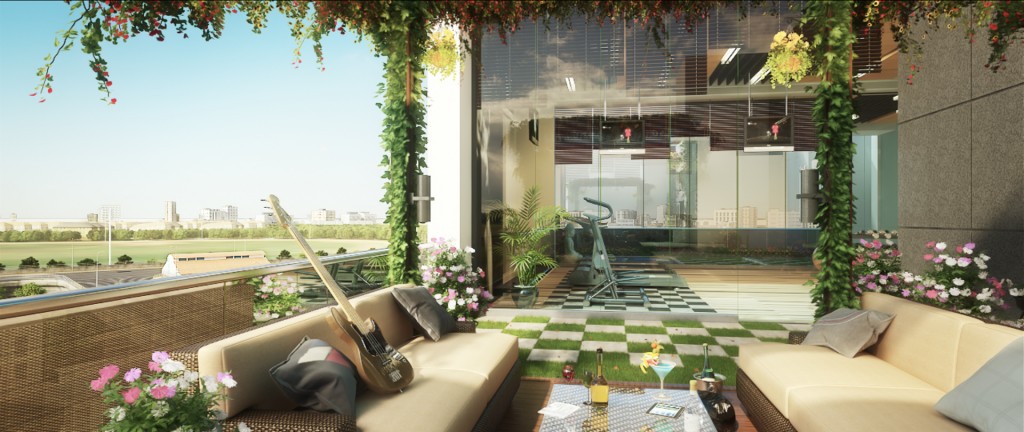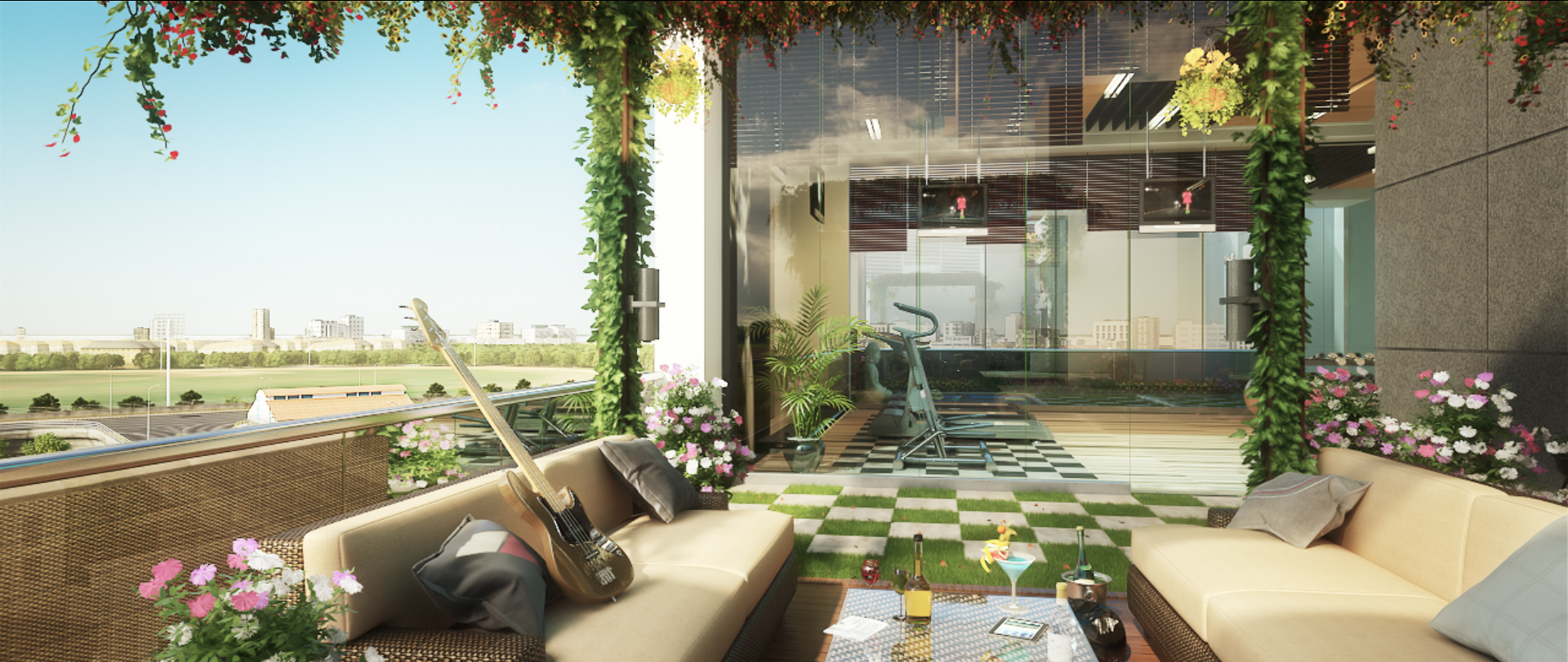Bottom Line: It is not affordable housing but affordable luxury that is driving the aspirational middle class homebuyers to periphery locations.
 The satellite towns and periphery locations of major cities across the country has been stigmatised as the last refuge of the struggling home buyers. The collective consciousness looks at these locations meant for buyers who have no choice but to compromise with their wants and needs. These locations often have not helped their cause with poor infrastructure and connectivity, thus lending credence to the critics’ aspersions as down market locations.
The satellite towns and periphery locations of major cities across the country has been stigmatised as the last refuge of the struggling home buyers. The collective consciousness looks at these locations meant for buyers who have no choice but to compromise with their wants and needs. These locations often have not helped their cause with poor infrastructure and connectivity, thus lending credence to the critics’ aspersions as down market locations.
However, a silent wave of image makeover has been sweeping these periphery locations in the last few years and at a time when the critics were busy in writing off many of satellite towns due to one reason or the other, the analysts tracking the property transactions were exposed to a new reality of affordable living in these non-descript locations.
The value of the ticket size may be having small but on the sheer volume of transactions these secondary locations across the major property markets of India are giving the prime locations a tough challenge. These are the locations having better track record of delivery and transactions during the slowdown than many of the over-glorified prime locations in the heart of the city.
Affordable luxury realities
Innovation that promises to bridge gap between two extreme end of property pyramid
First movers in the segment finding more buyers for affordable luxury
Interestingly more offering of affordable luxury in Mumbai and Delhi
Size making room for luxury offerings in the heart of city
Affordable luxury also in demand as second home
The credit for this change of fortune in favour of periphery locations goes to one single reason: emergence of affordable luxury living for the aspiring middle class who could not afford even a basic roof over the head with the same budget anywhere in the city.
Given the rise in disposable income of the middle income group and increasing exposure of luxury and lifestyle, everyone is today having aspiration of owning a luxury home. The Indian middle class home buyer is emerging on many given social indicators and has a quest for amenities that enhance their standard of living.
It seems they want the best of both the world; prefer products that are environment friendly yet affordable with state-of-the-art amenities. With the improved connectivity and other infrastructural developments in periphery locations, these locations are emerging as top real estate destinations for these buyers. With the major input cost of land being relatively much cheaper the developers too are in a position to offer more amenities and options in these markets.
Know the market
Market: Need of 12 million units by 2016 and 8 cities having about 23 percent out of the total demand. MIG and HIG to have 2.5 million demand
Buyers: Young aspirant professionals, Double income families, Newlyweds, 52.57% NRIs looking at settling down in India who want homes in the mid segment range in INR 26-75 lakhs range
Locations: Tier-II & III cities, Satellite towns, Periphery locations of metro cities
Mumbai, of course, is a case study because this costliest property market of India has been able to provide the concept of affordable luxury as a sustainable concept. In the periphery locations of the city the land prices are still comparatively less expensive to the main city which makes the development of the project affordable and yet luxurious. Locations like Navi Mumbai, Thane and Mulund are hence getting repositioned in the collective consciousness as the affordable luxury locations.
Moreover, with the infrastructure upgradation, many of these locations are no longer residential zones for underprivileged set of buyers. On the contrary, property in these areas can boast of providing high-speed access to airports, business centres, shopping malls, schools, health care facilities, entertainment areas and many other important destinations. In the main city all these social infrastructure may take more time to get access to.
Nikhil Hawelia, Managing Director of Hawelia Group who is into affordable luxury in one of the periphery locations of Delhi-NCR maintains that in today’s market consumers with global exposure and evolved tastes are purchasing affordable projects with premium facilities. Hence, the developers have to understand the buyers’ wants & needs and cater accordingly. This segment might be in its nascent stage but has already emerged as a standalone segment in the industry.
“Today, the developers have to take a conscious call to identify whether there are more buyers in premium projects in the heart of the city or the lifestyle oriented affordable housing projects in the periphery locations. My market study suggests volume game for aspirational middle class is the next wave. It would not only be the market differentiator but also a brand statement,” says Hawelia.
Surabhi Arora, Associate Director, Research with Colliers International, however, finds a method in the madness for affordable luxury. She believes the land cost is relatively cheaper in suburban and peripheral areas; thus in Mumbai affordable luxury makes more sense in locations like Wadala, Sion, Chembur, Kurla, Vikhroli, Kanjurmarg, Bhandup, Nahur, Mulund and Thane in Central Suburbs and Khar, Santacruz, Andheri, Jogeshwari, Goregaon, Malad, Kandivali, Borivali in Western Suburbs.
“The developers are also constantly experimenting to retain the luxury quotient by adopting innovative design and construction practices that not only provide a luxurious environment but also enhance the financial viability of the project. Most of these affordable luxury projects are characterised by amenities like swimming pools, clubs, Gyms, open spaces etc. However, the unit sizes are relatively smaller than the luxury projects,” says Arora.
Rajesh Turakhia, Director, Pashmina Developer feels that affordable luxury is a new concept in the real estate market. The concept ensures the possibility of living in luxury that provides amenities tailored to meet the lifestyle needs of a median household income section. According to him, several areas such as Powai, Chembur, Wadala and certain sections of the Western Suburbs have evolved in terms of residential pockets that could prove to be potential ideal locations for affordable luxurious projects, offering well-structured layouts with modern amenities with a good price bracket
“There is an overall increase in demands of such affordable luxurious projects across the country as the customers these days are demanding high standard and spacious living areas. With suburban areas such as Thane and Navi Mumbai excelling in infrastructural development, affordable luxury is a concept that will maintain its sustenance in the future,” says Turakhia.
If India’s costliest property market like Mumbai can sustain the concept of affordable luxury in its periphery locations, it shows a road map for the leading cities across the country. The young aspiring professionals with disposable income are the main demand drivers of property across the country, and the developers can provide affordable luxury as the traction point in the periphery locations.
This fine marriage of demand and supply also has the potential to revive the housing market to a large extent. Critics of the very concept of affordable luxury probably failed to see that demand leads to supply and, more importantly, acceptance of new concepts and themes in any given cycle of economy; real estate is no exception either.
By: Ravi Sinha





